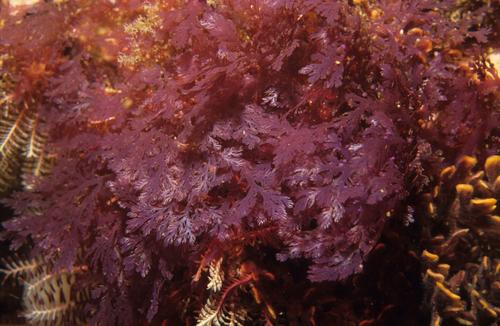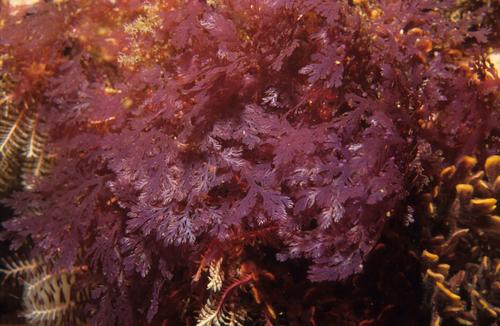Biofuel From Seaweed Saves Water, Land Area
October 18, 2012

Making biofuels from seaweed is one of the latest ideas for creating sustainable fuels that don't compete with food crops. Two different teams, one US-led and one in India, are working on solutions.
By growing on the surface of the ocean and using nutrients that derive from saltwater, seaweed as a feedstock is highly scalable yet avoids several problems associated with crops on land: competing with food crops for fresh water and arable land, and requiring fertilizer. Seaweed, a form of algae, is already cultivated around the world as a cheap form of food. It reproduces easily and is high in carbohydrates. However, because its chemistry differs from that of land plants, it requires a different type of process for converting them to sugars that can then be used for producing ethanol.

In Chennai, India, Sea6 Energy is working on a process that not only converts red seaweed (Plocamium sp.) to liquid fuel, but uses sea water for the process steps instead of the large quantities of fresh water used in converting agricultural crops to biofuels. That fresh water requirement is a major problem in drought-plagued areas of the world such as India, and is becoming a potential problem in traditionally more well-watered areas like the temperate zone US. The company's fermentation process reportedly uses regular yeast to digest the seaweed's carbohydrates without requiring the use of genetically engineered bacteria, more common in many seaweed-to-fuel conversion attempts.
Red seaweed is among the most productive seaweed species, and already used for other purposes, such as in the production of cosmetics. Sea6 Energy is focusing on improving seaweed cultivation methods, which have remained labor intensive, to scale up production and boost yields even higher. The company's engineers have developed proprietary structures that could extend seaweed farming beyond the shallow waters where it currently takes place, to more extreme environments in rougher seas.
In the US, the research team, led by BioArchitecture Labs, is investigating the combination of engineered bacteria with brown seaweed. In a paper published in Science, the team describes its process for converting the sugars in seaweed into ethanol by genetically engineering a bacteria that can digest them. The team's researchers say their process "enables bioethanol production directly from macroalgae via a consolidated process, achieving a titer of 4.7 percent volume/volume and a yield of 0.281 weight ethanol/weight dry macroalgae (equivalent to ~80 percent of the maximum theoretical yield from the sugar composition in macroalgae)."
A commentary in the same issue of Science points out that seaweed would have to be grown on more than 11,000 square kilometers (2.718 million acres) to produce enough ethanol to replace only 1 percent of the current US gasoline consumption. For comparison, a total of about 80 million acres of corn are currently grown in the US. As we've pointed out in blogs and several comment discussions on Design News posts, it's unlikely that any one sustainable and alternative fuel and energy source will single-handedly replace petroleum-based sources. Instead, it will likely take a mix, since they're not all created equal.
Related posts:
About the Author(s)
You May Also Like

.jpg?width=300&auto=webp&quality=80&disable=upscale)

